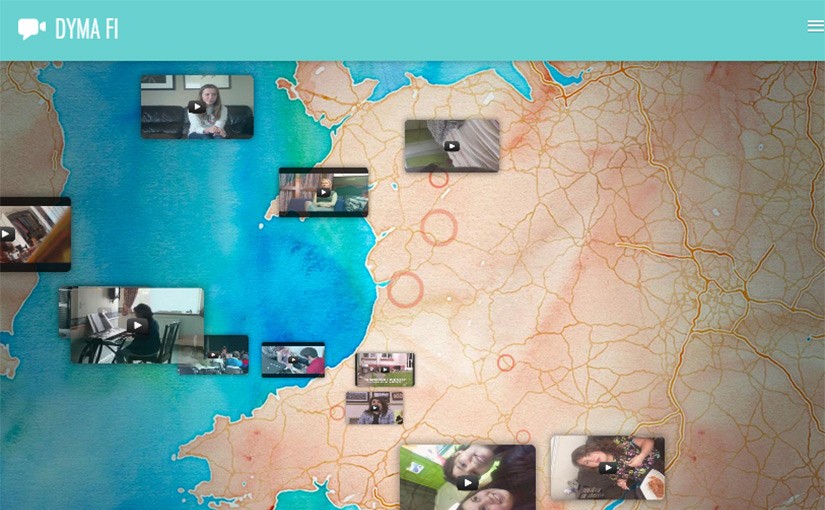On June 22nd the DymaFi.tv website officially launched.
UPDATE: DymaFi.tv was nominated for the Kieran Hegarty Award for Innovation at the 2014 Celtic Media Festival!
Dyma fi.tv is a website which gives a platform to young people between the ages of 13 and 18. They can upload videos and share a part of their lives as part of the Children’s Commissioner for Wales’ Dyma Fi/See Me project. The aim of the project is to give a realistic picture of young people in Wales today – in their own words.
Phil Stead from Cwmni Da brought me on the project to head up the technical side.
This is the biggest project that I have worked on, and possibly the most stressful. But I’m extremely proud of what was produced and how it worked.
Symfony2
DymaFi.tv was built as a custom bundle on the Symfony2 framework. Although I’d read much on S2 beforehand, it was the first time I’d actually had the chance to use it for real.
We did briefly discuss using Drupal or WordPress, but I was sure that neither these would not have been the correct solution. I’ve used much of both over the years, and ploughing through their ageing codebases did not attract me.
I was pretty confident that Symfony2 would be straightforward to pick up, but it took me much longer than I had anticipated. While frustrating that I knew what I wanted to do, just not the way Symfony2 wanted to do it (!), learning the ‘proper’ way of developing software was a worthwhile journey. Having a much better understanding of how software is structured make developing new projects much easier.
What I really came to appreciate about Symfony2 was the way in which database tables are defined as entities, and their relationships are hardcoded into the files. Whilst difficult to understand at first, I now miss the solid relationships between the entities, forms and the data they controlled. One of my recent projects was a simple plugin for WordPress, and not having a solidified relationship between database and code is limiting and feels so old fashioned.
FrontEnd
The front end was designed by the hugely talented Iestyn Lloyd, using the Bootstrap (version 2.x) CSS framework. I chipped in with some of the HTML and CSS, but my main work on the frontend was the coding. jQuery is in there as well as Three.js for controlling the zooming videos.
Vimeo API Development
As the site was for uploading and showing video, we decided to use Vimeo’s platform. Each uploaded video was sent to Vimeo via their API for encoding. It was then simple to use their player to showcase the submitted videos on the site. I used Vimeo’s PHP library on Github, but did end up making small improvements.
Version Control and Deployment
Github was used for versioning and deployment. I wrote a bash script on the server for deployments, and this was ran manually whenever we needed an update. Me and Iestyn have overwritten each other’s files on many projects, So Github was a welcome change. Iestyn even managed to overcome his deep rooted fear of the command line!
Testing
The site was hosted on Digital Ocean’s servers. The site handled all out uploading tests admirably, and this is no doubt thanks to Symfony2’s solid architecture (although Digital Ocean’s solid state hard drives helped!).
To my shame no unit test were designed. This was my first SYmfony2 app, and I had often read that unit test were not advised on first projects.
Conclusion
I would have liked to develop a simple Page CMS, but time did not allow it. Static pages were updated through the usual deployment process. One of Symfony2’s main problems is that although Composer works brilliantly, finding the correct version numbers for the dependencies was a pain.
I also struggled with getting Sonata Admin to work, although when it finally caved in it worked well.
Unit Tests would have improved development, but again time was against me.
In redoing the project, I would like to have had a proper development server and a better way of deployment. But with having to engineer all levels of functionality (server install/config, backend, frontend) on the project there simply wasn’t time.
All in all I enjoyed the learning experience and look forward to using Symfony2 again. This time the learning curve will not be quite as steep.
